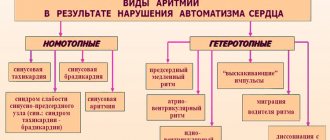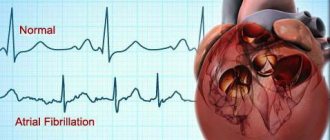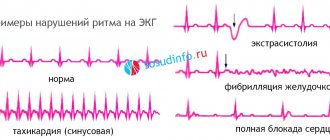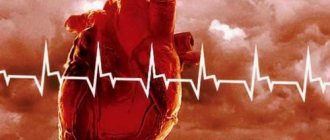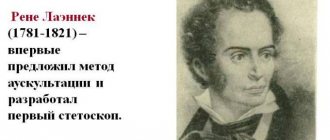The condition when the heart beats slowly is called bradycardia. This term describes a slow or irregular heart rate (HR) that can cause dizziness or shortness of breath during normal daily activities or light exercise. The condition is defined as a heart rate less than 60 beats per minute. At this frequency, a sufficient amount of oxygenated blood cannot be distributed throughout the body.
Characteristics of the symptom
Typically the heart beats 60-90 times per minute. A person feels these contractions as a pulse when palpating the arteries. Under certain circumstances, heart activity may slow to below 60 beats per minute - in this case we are talking about bradycardia. Some people with slow heartbeats have serious problems with this condition, while others don't even know they have it.
Group 1 includes people whose slow heart rate is caused by other diseases, mainly dysfunction of the cardiac conduction system, disorders of the thyroid gland, and increased intracranial pressure. Group 2 includes athletes whose bradycardia is caused by training and is practically harmless.
Are heart failures dangerous?
Interruptions in the heart should be considered an alarming sign in the following cases:
- If the unpleasant sensations recur several times a week or bother you constantly.
- If the duration of attacks increases each time.
- If the irregularity of the heart is accompanied by severe pain, noticeable pallor, fainting or increasing shortness of breath.
It is also worth noting that the severity of the patient’s subjective feelings does not always reflect the severity of the disease. Often, severe and frequent interruptions in the functioning of the heart are the result of unpleasant but harmless diseases, such as autonomic dysfunction.
Really serious illnesses, for example, severe arrhythmias (flutter, atrial fibrillation, extrasystole) and myocardial infarction can only be detected by ECG. Therefore, the exact answer to the question of whether the described sensations in the heart are dangerous should be given by the doctor after a complete examination of the patient.
Causes and diseases
Bradycardia is considered more of a physical disease. On the contrary, the human psyche increases heart rate. There are many reasons for the slowdown, so let’s look at the most common ones.
Sport
Professional athletes are usually well trained, and their cardiovascular system works effectively at rest, even at low frequencies. Therefore, it is not surprising that athletes often have a heart rate of about 50 beats per minute without accompanying symptoms. This bradycardia is discovered by chance, it is natural, does not limit a person, and does not jeopardize his health. For these reasons, she is not being treated.
Medicines
Bradycardia can be caused by medications that slow the heart rate. Most often, an overdose of β-blockers occurs. These drugs are prescribed primarily for heart disease. They have a wide range of effects - lowering blood pressure, reducing the risk of dangerous arrhythmias and, among other things, slowing heart rate, thereby reducing the impact of stress on the heart.
Overdosing on these drugs may slow your heart rate too much. The situation can be resolved relatively simply - by reducing the dose or discontinuing β-blockers. The risk of side effects from β-blockers is worsened when combined with certain calcium channel blockers (eg, Verapamil, Isoptin, Veragexal, Diacordin). Often the heart pumps slowly due to digoxin poisoning (severe bradycardia).
Decreased thyroid function
When the concentration of thyroid hormones decreases, cardiac activity slows down.
Sick sinus syndrome
This is a disease (English: Sick Sinus Syndrome - SSS), more common in old age. We are talking about a violation of the SA node, which is part of the cardiac conduction system. This is the area where electrical stimulation usually occurs. Excitement in the SA node propagates through the transmission system from the atrium to the ventricles, causing coordinated contractions of the myocardium. With sick sinus syndrome, the sinus node does not work properly, and the heart rate may be too slow and alternate with rapid atrial fibrillation. The cause of SA node failure is most likely due to age-related degeneration.
Disorder of the cardiac conduction system
When the SA node and atrial transport system are disrupted, the heart adapts and begins to generate electrical signals in the ventricular junction or ventricular region. But these areas cannot generate excitations with sufficient frequency, and the heart rate can drop to 40 beats per minute. A similar situation occurs with certain types of atrioventricular blockages, characterized by disturbances in the transmission of impulses from the atria to the ventricles.
Ion vibrations
Bradycardia often occurs as a concomitant sign of increased potassium concentrations.
The heart beats either slowly or quickly, what is it – Treatment of hypertension
Have you been struggling with HYPERTENSION for many years without success?
Head of the Institute: “You will be amazed at how easy it is to cure hypertension by taking it every day...
Read more "
The version that hypertensive heart disease develops in people who harbor a grudge against someone, are envious, offended or angry, is supported by both patients and doctors themselves.
It is known that a person’s psycho-emotional state is directly related to his physical health. And with high blood pressure, the slightest worry, not to mention severe stress, can lead to a hypertensive crisis.
OUR READERS RECOMMEND!
Our readers successfully use ReCardio to treat hypertension. Seeing how popular this product is, we decided to bring it to your attention. Read more here...
There are certain mudras for lowering blood pressure, calming and tranquilizing. The effectiveness of this method of treating high blood pressure has not received official scientific confirmation.
But many patients use it and claim that they feel much better and during attacks of hypertension, mudras really help them calm down and return their blood pressure to relative normal.
What are mudras
Mudra is a ritual-symbolic, sacred gesture that is used in Buddhism to personify any concepts or ideas. At its core, it is a simple folding of the fingers, forming a certain figure.
It is believed that mudras can heal a person, if not completely, then at least significantly improve his well-being. But you cannot do all the mudras - you need to choose one or several that are intended to treat a specific disease, and perform them correctly.
For example, mudras for high blood pressure should be done like this:
- The face should be turned strictly to the East;
- When doing this, you need to look at green objects;
- It is advisable to inhale the scent of geranium for maximum effectiveness.
You should fold your fingers, making pressure mudras, synchronously on both hands, and at the same time breathe measuredly and deeply, exhaling as if you need to envelop and warm the entire world around you with your breath.
The following are the most popular and effective mudras for reducing high blood pressure, although in fact there are many more.
on
You need to sit down and relax, bend your arms at the elbows and place them in front of your body. Then interlace your fingers so that the little finger of your right hand is the outer one - this is important!
Next, you need to straighten the index finger of your right hand and bend the thumb of your left hand.
Bend the index finger of your left hand, place it behind the index finger of your right hand and press it to its base.
Now you need to bend the thumb of your right hand and move it under the bent index finger of your left hand. The straightened thumb and index fingers remain straight, there is no need to strain them.
While performing this mudra, you must remember to breathe correctly.
This mudra is considered one of the most effective in the treatment of cardiovascular diseases and everything related to the heart and blood pressure. In terms of the strength of its action, it is compared to a dose of validol or nitroglycerin - that’s how strong this mudra can be if you perform it correctly every day.
The technique is not that complicated and is quickly memorized:
- Put your fingers in a bun.
- Bend your little finger to the side.
- Bend your index finger, place it behind your thumb and press it to its base.
That's all. Such a simple combination can relieve a heart attack not only for the patient himself, if he performs it, but also for another person nearby.
You need to do it sitting or lying down, in a completely relaxed state, closing your eyes and imagining a heart whose vessels are gradually expanding.
In this case, you should slowly inhale and exhale through your mouth, as you exhale, drawing in your stomach and mentally repeating: “The vessels of my heart are expanding with every breath, my condition is getting better and better.”
The duration of one session is at least 5 minutes. If there is no improvement within this period of time, you should repeat the mudra after a while.
Mudra "Vajra Arrow" or "Finger"
This mudra is also effective for hypertension; it is very simple to perform. You need to raise your hands in front of you and interlace your fingers into a lock. Then pull out your index fingers and thumbs and press them together. Next, there are two implementation options. In the first version, the thumbs stick out, in the second they are pressed against the base of the extended index fingers.
It is recommended to do this mudra for 10-15 minutes. In this case, you need to exhale slowly through your mouth and slowly say to yourself, “My blood vessels are expanding, expanding and expanding, my blood pressure is stabilizing, decreasing and decreasing, and returning to normal levels of 120/80 mmHg.”
Mudra "Turtle"
In Buddhism, the turtle is a sacred totem and is revered and worshiped. According to Indian myth, it was the turtle who retrieved the elixir of immortality for the gods from the bottom of the ocean.
This mudra is recommended for everyone who suffers from high blood pressure, asthenia, heart pain, and fatigue. It is also recommended to do it if you feel that there is an energy vampire nearby.
So, make mudra as follows:
- Raise your arms in front of your body, bend them at the elbows;
- Interlace your fingers with a lock;
- Bend both thumbs and connect them with their side surfaces;
- Take a deep breath in through your nose and exhale through your mouth, and imagine any green object.
If you close your fingers, as indicated above, all the meridians in the human body will align, the circle will close, and it will be reliably protected from possible leakage of positive energy. At the same time, the plane formed by closed fingers is an accumulator of vital energy, which will be aimed at restoring and maintaining health.
To cure arterial hypertension and prevent pressure surges, it is recommended to perform these mudras every day, preferably supplementing them with breathing exercises to reduce pressure. This article will tell you what mudras are in practice.
on
Source: https://puls.lechenie-gipertoniya.ru/simptomyi/serdtse-betsya-to-medlenno-to-bystro-chto-eto/
Associated symptoms
Slow heart action may not occur at all or may be accompanied by a variety of signs of heart failure. This is logical - a slow-working heart muscle ceases to sufficiently supply blood to tissues, including the brain.
Symptoms accompanying a slow pulse:
- dizziness;
- fainting;
- extreme fatigue;
- dyspnea;
- chest pain;
- problems with concentration;
- decrease in blood pressure.
Some people have no symptoms, or their symptoms are so mild that a slow heart rate is perceived as just a normal sign of aging.
Treatment of heart failure
The approach to treating heart failure is determined by the cause of the development of this symptom. In some situations, conservative therapy will be effective, in others, surgical intervention may be necessary (for example, stenting of the coronary arteries in severe cardiac ischemia), in others, doctors will limit themselves to observation and general recommendations (on regimen, diet, physical activity). What is clear is that without eliminating the cause, even the most modern antiarrhythmic treatment will not give a truly good result.
The second factor that determines the treatment tactics for irregular heart function is the nature and potential danger of rhythm disturbances. With some of them, the patient's heart may even stop. Therefore, doctors will take active therapeutic measures and, if drug therapy is ineffective, they will recommend surgical intervention (for example, radiofrequency ablation of an arrhythmogenic focus in the myocardium or installation of a pacemaker). As for the symptomatic treatment of heart failure, it is carried out with the following groups of drugs:
- Antiarrhythmic drugs. For each type of arrhythmia, certain medications from this group are indicated, so taking pills to help one of your relatives get rid of an attack is strictly prohibited.
- Sedatives - herbal or synthetic. Worry and anxiety are factors that provoke the appearance of heart failure, so they must be excluded.
- Metabolic drugs. Medicines in this group improve metabolic processes in the myocardium, which contributes to more efficient functioning of the heart muscle.
In addition, in case of interruptions in the functioning of the heart, it is very important that the patient stop drinking and smoking, start eating properly, enriching his diet with heart-healthy foods, give up heavy physical work if possible, and review his daily routine, devoting sufficient time to rest and sleep. Equally important is regular visits to a cardiologist with mandatory registration of an ECG and the necessary blood tests.
Treatment
Bradycardia can occur as an independent condition or accompany other diseases. Therefore, it is important to determine its cause, and treat it accordingly. It is important to find out what medications the patient is taking. If beta-blockers are used, they should be stopped and replaced if necessary. If the cause of bradycardia is a thyroid disease, the disease must be controlled with medications (eg appropriate hormone tablets).
But, if the cause of a slow heartbeat is a dysfunction of the transport system, treatment is more complex. If the patient's condition is acute, medications that accelerate cardiac activity (Atropine, adrenaline) are prescribed, but their effect is short-term, and they cannot be used for a long time.
In the case of a disorder of the transfer system, the only long-term treatment option is the implantation of a pacemaker. A pacemaker is a small device implanted under the skin, most often under the collarbone on the left or right side of the chest. The pacemaker consists of a battery and computer circuits housed in a small metal case. The device constantly monitors heart rate.
When it detects a problem in the form of a slow rhythm, it sends a small electrical impulse aimed at correcting the problem.
FacebookvKontakteTwitterWhatsApp
Impaired myocardial contractility - diagnosis
The most informative methods for studying SM are:
- standard electrocardiogram;
- ECG with stress tests;
- Holter monitoring;
- ECHO-K.
Also, to identify the cause of a decrease in SM, a general and biochemical blood test, a coagulogram, a lipid profile are performed, the hormonal profile is assessed, an ultrasound scan of the kidneys, adrenal glands, thyroid gland, etc. is performed.
SM on ECHO-KG
The most important and informative study is ultrasound examination of the heart (assessment of ventricular volume during systole and diastole, myocardial thickness, calculation of minute blood volume and effective cardiac output, assessment of the amplitude of the interventricular septum, etc.).
Assessment of interventricular septal amplitude (IVS) is an important indicator of ventricular volume overload. Normokinesis AMP ranges from 0.5 to 0.8 centimeters. The amplitude of the posterior wall of the left ventricle is from 0.9 to 1.4 centimeters.
A significant increase in amplitude is observed against the background of impaired myocardial contractility, if patients have:
- aortic or mitral valve insufficiency;
- volume overload of the right ventricle in patients with pulmonary hypertension;
- coronary heart disease;
- non-coronarogenic lesions of the heart muscle;
- cardiac aneurysm.
Is it necessary to treat myocardial contractility disorders?
Violations of myocardial contractility are subject to mandatory treatment. In the absence of timely identification of the causes of impaired SM and the prescription of appropriate treatment, the development of severe heart failure, disruption of the functioning of internal organs against the background of ischemia, and the formation of blood clots in vessels with a risk of thrombosis (due to hemodynamic disorders associated with impaired SM) are possible.
If the contractility of the left ventricular myocardium is reduced, then the development is observed:
- cardiac asthma with the appearance in the patient:
- expiratory dyspnea (impaired exhalation),
- obsessive cough (sometimes with pink sputum),
- bubbling breath,
- pallor and cyanosis of the face (sallow complexion is possible).
Attention. Violations of right ventricular SM are accompanied by the appearance of shortness of breath, decreased performance and exercise tolerance, as well as the appearance of edema and enlargement of the liver.
How to lower blood pressure quickly at home: what to do and how to stabilize
Blood pressure is the hydrodynamic blood pressure in capillaries, arteries and veins. Through the work of the heart, blood is pumped into the circulatory system.
And the vessels expand with the help of elastic walls, resisting blood flow. Thus, blood pressure appears, having different indicators for certain types of vessels.
When the heart contracts, blood expands the vascular walls. At the moment of cardiac pause, the walls of the arteries shrink, forcing the blood to move further into the vessels.
When the heart muscle contracts, blood pressure becomes higher, and when it relaxes, it falls, that is, a decrease in blood pressure occurs.
Previously, a disease such as hypertension developed in older people, but today this disease can appear in people under 35 years of age. The reasons for this phenomenon lie in the wrong lifestyle:
- alcohol and tobacco abuse;
- lack of physical activity;
- abuse of caffeinated drinks;
- stress;
- excessive salt intake;
- some diseases and hereditary factors.
For a healthy person, a blood pressure of 110-120/60-79 mmHg is considered normal. Art. However, with age, these indicators change, for example, in an elderly person, blood pressure is often elevated - from 130/80 to 150/90 mm Hg. Art.
It is extremely important to stabilize blood pressure in a timely manner, because untreated hypertension can lead to the development of a number of complications:
- cerebrovascular accident;
- cardiac ischemia;
- strokes;
- heart and kidney failure;
- narrowing of the eye vessels, etc.
How to get rid of high blood pressure with the help of medications?
If you need to quickly lower your blood pressure at home, then medications will come to the rescue. It is better for a hypertensive patient to stock up on several medications in advance that can eliminate the symptoms of a hypertensive crisis before the doctor arrives, and he will prescribe more serious treatment.
So, the first aid kit of a person suffering from arterial hypertension can be replenished with Corvalol, an effective medicine that has a quick effect. If blood pressure is too high, then 5-7 drops of the medicine should be dissolved in 100 ml of warm water. Relief will come in 20-30 minutes.
In addition, the first degree of hypertension is well treated with Validol. However, the drug can be taken when blood pressure has risen due to nervous and stressful conditions. Treatment is as follows: 1 tablet is placed under the tongue and dissolves. After 5 minutes, the blood vessels should dilate and the heart rhythm should stabilize.
Another effective sedative medicine is Glycine. It dilates blood vessels, which normalizes blood pressure.
In addition, the drug has a sedative effect, eliminating nervousness, aggression and increased excitability. However, if you take it with low blood pressure, then you may experience dizziness and drowsiness.
Andipal is a potent medicine often used for high blood pressure. Since the product is very effective, its use should be treated very carefully - treatment should last no more than 3 days. At the same time, when the lower pressure is unstable, then taking such a drug is undesirable.
In addition to the remedies described above, hypertension can be treated with the following medications:
- Reserpine;
- Enalapril;
- Losartan;
- Clonidine;
- Captopril and others.
Products to reduce blood pressure
on
How to lower blood pressure at home without medications? If you have high heart pressure, you can use ordinary products, which, like tablets, have a hypotensive effect, but it is insignificant.
So, garlic can help with initial hypertension. To normalize blood pressure levels, you should consume 1 clove per day. Thanks to this, the production of hydrogen sulfide and nitric oxide is stimulated, which relaxes and dilates blood vessels, so garlic can be very useful for hypertension.
You can also use ginger at home. Thus, systematic treatment with the root of this medicinal plant helps to relax the perivascular muscles, which helps normalize blood pressure.
Lemon is another useful product that contains microelements that strengthen vascular walls, making them more elastic. Citrus fruits also prevent the development of atherosclerosis.
To normalize blood pressure, you need to drink mineral water with lemon juice or eat several lemon drops with honey a day.
Cinnamon is a good remedy that can relieve mild hypertension. Although spices are often used to treat hypotension, cinnamon powder affects taste buds, resulting in the production of endorphins - happiness hormones.
As a result, the patient calms down and relaxes, which allows the blood vessels to dilate. So, cinnamon can be added to various dishes, kefir, milkshakes or cocoa. At the same time, you can consume no more than 1 tsp per day. cinnamon.
Moreover, if you have a headache and high blood pressure, you can eat a couple of slices of dark dark chocolate. However, sweets with a lot of cream and sugar lead to obesity, which negatively affects blood pressure levels.
But high-quality dark chocolate is a tasty and effective remedy that helps normalize blood pressure. Since most often the causes of hypertension are stress and emotional overload. Natural chocolate also saturates with energy, calms and supports the body during intense physical activity.
In addition, treatment of the initial stage of hypertension with food involves the use of honey. For this purpose, you need to eat 1 spoon of sweet medicine once a day.
Massage and exercise
In addition to drug therapy, first aid for hypertension may include the following procedures:
- self-massage;
- neck massage;
- breathing exercises;
- charger.
Very often, the reasons why blood pressure may increase are tension and tightness in the body. Therefore, to quickly relax the muscles, you can do a neck massage.
To do this, tilt your head downwards, relaxing it. Then you need to make smoothing movements on the sides of the neck from the base of the ears to the shoulders.
Next, you need to make springy circular movements at the back of your head along the hairline. The movements should be directed from the ears to the middle of the neck, and then - circular pressure in the opposite direction.
The palm of the hand should be placed on the top of the back, and the fingers should lie parallel to the spine. With slight pressure, you should make counter movements with your palms.
Each exercise must be performed for at least 2 minutes, and then return to the IP and rest for 1 minute. This cycle can be repeated several times.
Also, drug treatment of hypertension with a slight increase in blood pressure can be replaced by breathing exercises.
So, first you should slowly inhale air through your mouth, exhaling it through parted lips. At the same time, you need to breathe deeply, sticking out not your chest, but your stomach. This breathing technique allows the diaphragm to move lower. This helps the body relax and blood vessels dilate.
Next, you need to close one nostril and inhale the air again according to the method described above. Then you should change the nostril.
You can also get rid of arterial hypertension by doing special physical exercises. However, gymnastics should be performed for preventive purposes after the pressure level decreases.
- The feet are pressed to the floor, you need to spring on slightly bent legs. In this case, the arms should twirl freely and the body should be completely relaxed.
- As you inhale, you need to raise your arms up and lower them through the sides as you exhale. Then you should sit down without lifting your feet from the floor and place your upper limbs on the floor on your sides.
- Position – lying on your stomach, your relaxed head should be pressed to your hands folded in front of you. Then you need to raise one of your legs low and do springs in the air. The same manipulations should be performed with the other leg.
Drinks that lower blood pressure
How to quickly lower blood pressure at home with drinks? If a slight reduction in blood pressure is required, you can replace drug treatment with green tea and honey. It makes vascular walls more elastic, removing cholesterol and excess fats from the body.
It is also useful to drink hibiscus for hypertension, heart disease and arthritis. But you shouldn’t get too carried away with this drink; one cup a day will be enough.
Cocoa is rich in finols, thanks to which it helps cope with stress and prevent the development of heart and vascular diseases. In addition, such a drink is a natural antidepressant, as it affects the taste buds, resulting in the production of endorphins.
Also, if your blood pressure is too high, beetroot juice may be helpful. At the beginning of therapy, you should take 2-3 tbsp of this remedy. l., then the dose should be gradually increased, reaching two glasses a day. It is equally useful to mix beet juice with carrot juice.
Heart, its structure
The weight of the heart of an adult is from 250 to 360 g. The heart is located in the chest cavity almost along the midline of the body, behind the sternum, slightly to the left of it.
The upper, expanded part of the heart, from which the vessels depart, is called the base, and the lower, somewhat narrowed part is called the apex. It is the apex of the heart that “knocks” into the chest. The heart is a hollow organ. Its wall consists of three layers (shells): outer connective tissue (epicardium), middle - muscular (myocardium) and inner, formed by single-layer squamous epithelium (endocardium). The epicardium is tightly fused with the myocardium.
The heart is located in the pericardium . Between the epicardium and pericardium there is a closed cavity containing a small amount of fluid, which reduces the friction of the heart during its contractions.
The heart consists of right and left halves, each of which contains an atrium and a ventricle (Fig.). They communicate with each other through the atrioventricular openings, which are closed in the left half by bicuspid valves, and in the right half by tricuspid valves.
The muscular wall of the atria is much thinner and weaker than the wall of the ventricles. This is explained by the fact that the atria perform less intense work compared to the ventricles. A particularly large burden of moving blood falls on the left ventricle. Its muscular wall is 2.5 times thicker than the wall of the right ventricle.
The pulmonary trunk departs from the right ventricle, and the aorta from the left. The openings from which these vessels begin are closed by semilunar valves (Fig.). They open only during contraction of the ventricles.
The operation of the heart valves ensures the unidirectionality of blood flow: from the atria to the ventricles, from the ventricles to the arterial vessels extending from the heart.
Well-being assessment
However, before you start checking your heart rate during exercise, be sure to also evaluate how you're feeling. Research shows that perceived tension correlates well with heart rate. So if you think you're working hard, your heart rate is probably higher than usual.
Moderate activity after about 10 minutes of exertion should make you breathe faster (but not out of breath), sweat slightly, and be able to carry on a conversation. After a few minutes of vigorous exercise, you should be breathing deeply and rapidly, sweating, and losing the ability to speak without inhaling after a few words.
Listen to your body and don't overload yourself. If you find the workout particularly challenging or your heart rate is too high, rest. If your heart rate is too low, you can speed up the pace. Of course, always consult your doctor about changes in your physical activity or problems that arise during exercise. This little extra attention to your heart rate can make a big difference in your health in the long run.
Automaticity of the heart
When the necessary conditions are created, a heart removed from the body can contract for several hours and even days. The ability of the heart to contract regardless of external influences under the influence of impulses arising within itself is called automaticity.
The source of automation is the accumulation of special muscle cells included in the myocardium - pacemakers, which generate electrical impulses.
Clusters of such muscle cells form several nodes in different parts of the heart. They contain not only muscle cells, but also nerve cells. The main node of the conduction system of the heart is located at the confluence of the superior and inferior vena cava into the right atrium (Fig.). It is here that impulses arise that determine the rhythm of heart contractions. Under the influence of these impulses, the muscle tissue of the heart contracts, expelling blood from the cavities of the heart. If, for some reason, excitation does not occur in the main node, the role of pacemaker is assumed by a node located deep in the heart septum at the border of the atria and ventricles.
Medicines for effective treatment of tachycardia
Tachycardia is a common disease in which there is an increase in heart rate. The heart always beats faster during strong excitement and physical work. But in these cases, this is the norm, that is, this is how the body naturally reacts to stress. For example, your heart rate increases when you walk or run quickly. Normally, it should recover within 5 to 10 minutes.
If the heart rhythm is not restored for a long time, or the rapid heartbeat has no apparent reason, then we are most likely talking about a disease. This is tachycardia, in which there is an increase in heart rate. This condition requires contacting a cardiologist. Even if the disease does not affect your well-being in any way, you should know that with this mode of operation, the main organ wears out faster. If you miss time, complications may develop, such as impaired blood supply to the brain, pulmonary edema, or cardiac arrest. A person with tachycardia of healthier people is at risk by drinking strong coffee or alcohol. In addition, some medications may cause an unexpected attack of tachycardia. Therefore, the disease must be treated, including taking medications.
Read also: Alcohol insomnia what to do
What drugs are there for tachycardia?
Many medications have been developed to treat tachycardia, but only a doctor can decide which drugs to take in each individual case. Therapy depends on the causes of tachycardia, which is most often a symptom of other diseases. In this case, treatment is aimed at the primary disease. Drug treatment of tachycardia gives a good effect, but in search of a better result you have to try different remedies.
There are medications intended for symptomatic treatment. This is a large group of medications with different mechanisms of action to normalize heart rhythm. The dosage and duration of therapy is strictly individual and can only be discussed with a doctor.
The course of drug treatment is chosen only by the doctor, taking into account many factors. There are several types of medications that are used for tachycardia. They can be divided into two groups: sedative (with a calming effect) and antiarrhythmic.
Sedatives can be natural or synthetic. They normalize the functioning of the heart and nervous system, reduce the number of attacks.
Natural medicines
- Valerian. Available in the form of tinctures and coated tablets. The drug dilates the blood vessels of the heart, promotes rapid sleep, and slows the heartbeat. Valerian is a weak choleretic and antispasmodic agent. It has a moderate, slow-onset, but stable sedative effect due to alkaloids and essential oils. The effect occurs only with long-term and constant use (at least 1.5 months). Medicines may have contraindications, so you should not self-medicate. An overdose of the drug can lead to the opposite effect - overexcitation.
- Hawthorn tincture. Indications: atrial fibrillation and paroxysmal tachycardia. Reduces heartbeat and excitability, normalizes blood pressure, and has a calming effect.
- Persen is a moderate sedative. Available in capsules and coated tablets. It contains valerian, peppermint, lemon balm. Preparations based on these medicinal herbs reduce fatigue, irritability, nervousness, anxiety, excitability, help you fall asleep faster, and improve appetite.
- Motherwort. Medicinal plants have long been used to normalize the functioning of the nervous system. In pharmacies you can purchase drugs in tablets or in the form of alcohol tincture. Motherwort has a sedative and mild antispasmodic effect, normalizes heart rate, improves heart function, relieves insomnia and has virtually no side effects.
- Peony. Alcohol tincture relieves nervous tension, improves mood, and has a mild hypnotic effect.
Irregular heartbeat
If a person listens to his heart and feels his pulse fading, this does not indicate the presence of health problems. This problem often occurs in healthy people. It can be caused by certain foods, stress and experiences. The main thing is to determine the cause of the uneven pulse, after which we can already talk about the need for treatment.


